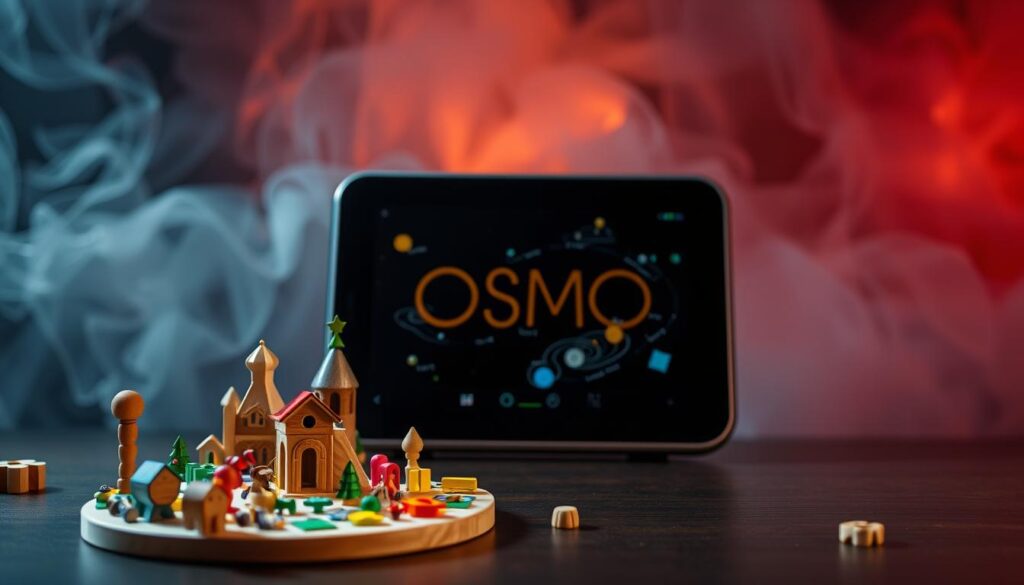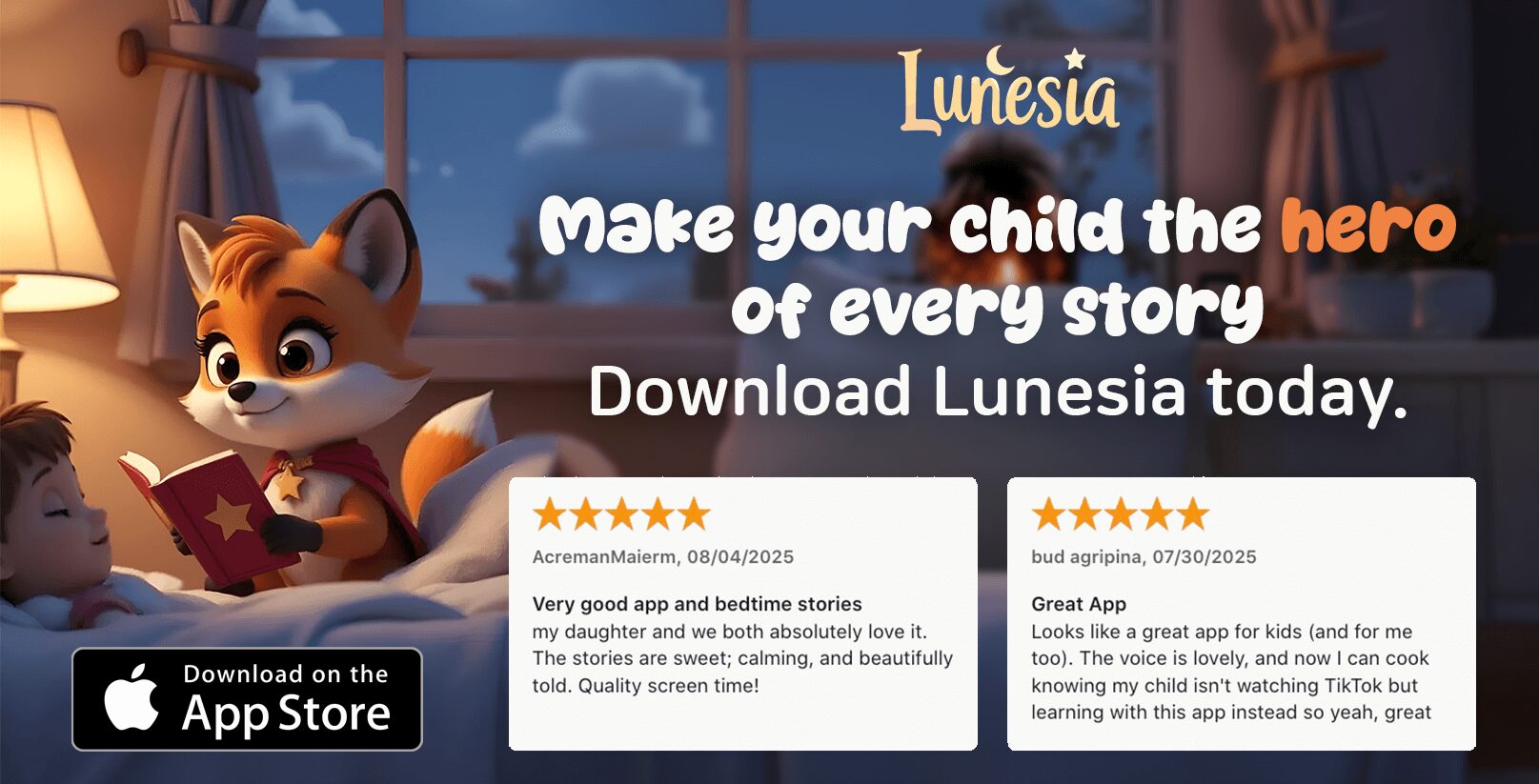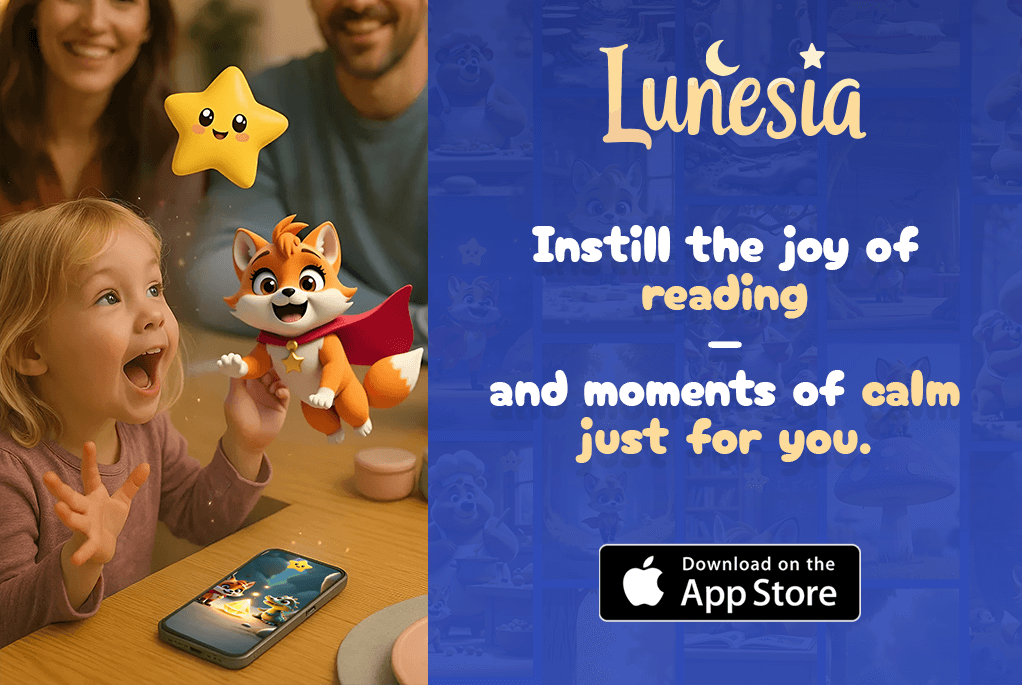As a parent, choosing the right educational technology for your child can be overwhelming. I’ve been in your shoes, researching and testing various platforms to find the best fit. In this article, we’ll explore two innovative systems: Lunesia and Osmo.
Both platforms combine physical play with digital experiences, but they approach this in different ways. Lunesia focuses on interactive digital storytelling, while Osmo pioneered tangible play technology. I’ll break down the key differences to help you decide which one aligns with your child’s learning style and interests.
By understanding the unique strengths of each system, you’ll be better equipped to make an informed decision about your child’s educational journey.
Understanding Tangible Play and Digital Storytelling
In the realm of children’s learning, two distinct approaches have gained prominence: tangible play technology and interactive digital storytelling. As a parent, understanding these approaches can help you make informed decisions about your child’s educational tools.
Tangible play technology and digital storytelling are revolutionizing the way children learn by making it more interactive and engaging. Let’s dive deeper into what each of these approaches entails.
What Is Tangible Play Technology?
Tangible play technology represents a revolutionary approach to children’s learning by bridging physical objects with digital experiences, creating a multi-sensory educational environment. Systems like Osmo use reflective AI technology to recognize physical objects and movements, transforming them into digital interactions on screen through specialized software. This integration of physical and digital elements can enhance spatial reasoning and fine motor skills in children.
For instance, Osmo’s system allows children to manipulate physical blocks or puzzles that are then reflected on a digital screen, providing immediate feedback and guidance. This hands-on approach to learning can be particularly effective for young children who are just beginning to explore the world around them.
| Features | Tangible Play Technology |
|---|---|
| Learning Approach | Multi-sensory educational environment |
| Technology Used | Reflective AI, Specialized software |
| Skills Developed | Spatial reasoning, Fine motor skills |
The Evolution of Interactive Digital Storytelling
The evolution of interactive digital storytelling has transformed from simple choose-your-own-adventure books to sophisticated systems that respond to a child’s choices and actions in real-time. Modern digital storytelling platforms like Lunesia incorporate adaptive learning algorithms that personalize the narrative based on a child’s progress and preferences. This not only keeps children engaged but also strengthens their language development and sequential thinking.
Digital storytelling can transport children to different worlds, fostering their imagination and creativity. By interacting with the story, children can influence the narrative, making the experience more immersive and personal.
Both tangible play technology and interactive digital storytelling offer unique benefits, and understanding these can help you choose the best educational tools for your child. While tangible play enhances spatial reasoning and fine motor skills, digital storytelling strengthens language development and sequential thinking.
Lunesia vs Osmo: Core Differences at a Glance
At the heart of the Lunesia vs Osmo discussion lies a critical examination of their educational philosophies and technological approaches. Understanding these core differences is crucial for parents seeking the most effective learning tools for their children.
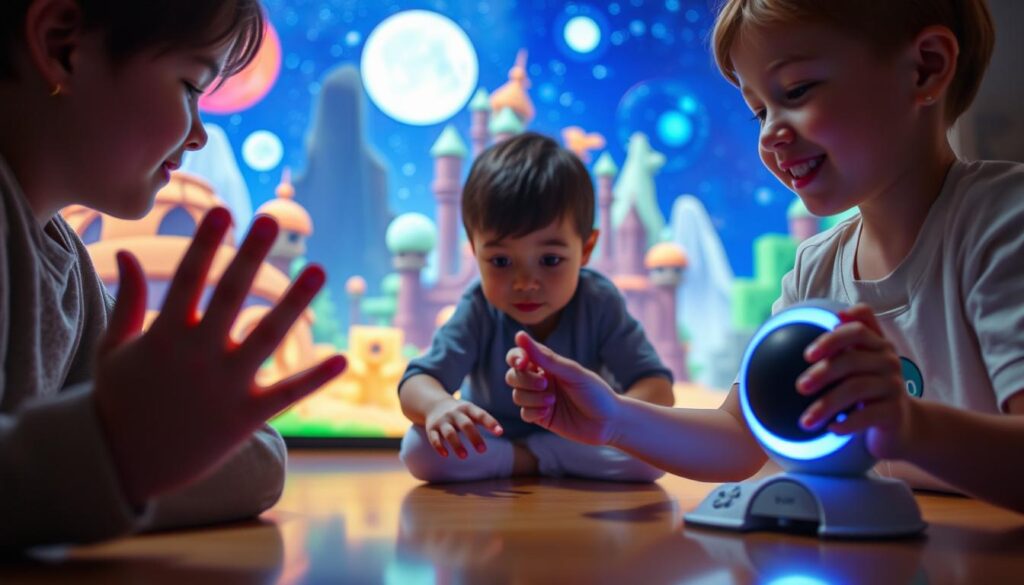
Brand Philosophy and Educational Approach
Lunesia and Osmo embody two distinct philosophies in educational technology. Lunesia focuses on narrative-driven learning through interactive stories, while Osmo emphasizes hands-on manipulation of physical objects. Lunesia’s platform is built around immersive video content that responds to a child’s choices, creating personalized learning journeys. In contrast, Osmo’s approach centers on tangible interaction, using physical pieces that children manipulate while the system translates these movements into on-screen activities and feedback.
Target Age Groups and Learning Styles
When examining target age groups, it’s clear that Osmo offers a broader range of products suitable for children ages 3-12, with different kits designed for specific developmental stages. Lunesia, on the other hand, tends to focus more narrowly on the 4-10 age range but offers more depth within that range through its adaptive storytelling engine. For visual and kinesthetic learners, Osmo’s hands-on approach often provides immediate engagement, while auditory and verbal learners may connect more deeply with Lunesia’s narrative-rich environment. You can explore more about the effectiveness of digital storytelling in learning here.
Understanding your child’s preferred learning style can significantly impact which system will yield better engagement and educational outcomes in your home.
Lunesia: A Comprehensive Overview

With its adaptive storytelling engine, Lunesia provides a personalized learning journey for children. This innovative system has been developed after extensive research with thousands of users across diverse backgrounds, ensuring it addresses multiple learning styles and cultural contexts.
Origin Story and Development
Lunesia emerged from a team of former educational psychologists and game developers who wanted to create a system that prioritized storytelling as the primary vehicle for learning. The platform was developed with a deep understanding of how children learn best, combining the benefits of interactive technology with the engaging nature of stories.
Key Features and Components
The Lunesia interactive learning system boasts several key features that make it an effective educational tool:
- At the heart of Lunesia is its adaptive storytelling engine that creates personalized learning paths based on a child’s interactions, preferences, and progress over time.
- The physical components include a base station that connects to tablets or smart TVs, along with character tokens that trigger different story worlds when placed on the reader.
- Unlike many competitors, Lunesia incorporates voice recognition technology that allows children to verbally respond to story prompts, enhancing language development and comprehension.
- The Lunesia library currently includes over 50 interactive stories spanning subjects from science and mathematics to social-emotional learning and cultural exploration. For a more detailed review, you can visit https://lunesia.app/lunesia-app-review/.
- Parents particularly appreciate Lunesia’s detailed progress reports that track not only academic skills but also decision-making patterns and problem-solving approaches.
- The system requires minimal setup and maintenance, with automatic updates ensuring new content and features are regularly added without parent intervention.
By combining these features, Lunesia creates an immersive and engaging learning environment that adapts to the needs of each child, making it a valuable tool for parents seeking to provide their children with a comprehensive educational experience.
Osmo: The Pioneer in Tangible Play
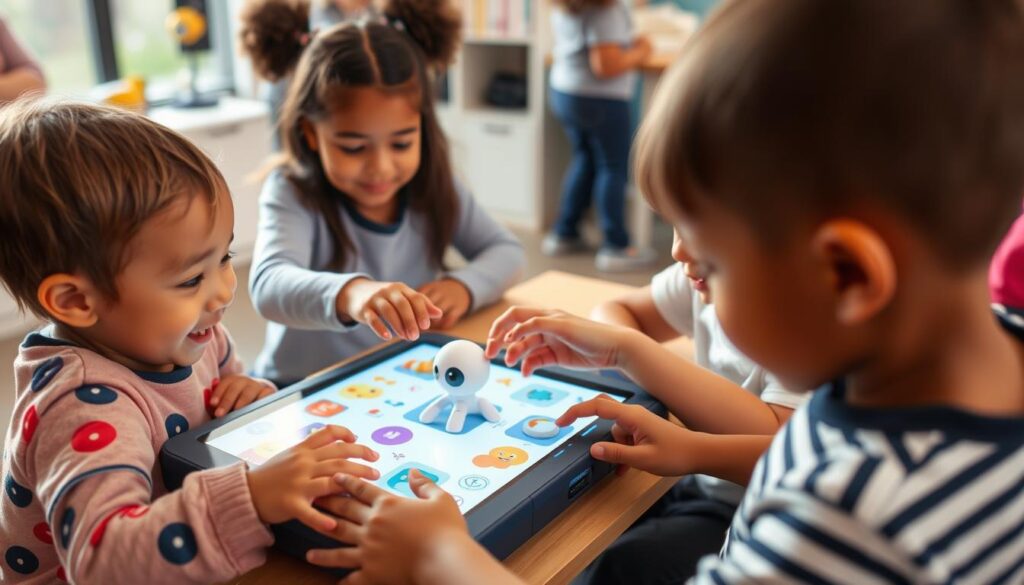
With its innovative approach, Osmo revolutionized the way children learn through play. By combining physical elements with digital technology, Osmo created an immersive learning experience that has captivated children and educators alike.
Osmo’s Journey and Market Position
Osmo was founded by former Google engineers who saw an opportunity to merge physical play with digital learning. Launched in 2014, Osmo quickly gained recognition for its innovative approach to educational gaming. By 2019, its impact was significant enough to attract the attention of Byju’s, a leading educational technology company, which acquired Osmo for $120 million.
This acquisition not only underscored Osmo’s market position but also highlighted its potential for continued innovation in the educational technology sector.
Flagship Products and Accessories
At the heart of Osmo’s offerings is its core system, which includes a base and reflector that attaches to tablets, enabling the device’s camera to interact with the physical play space. Among its most popular products is the Genius Starter Kit, which includes tangible pieces for five different games focusing on math, spelling, visual thinking, and problem-solving.
Other notable kits include the Coding Starter Kit, which introduces programming concepts through physical coding blocks, and the Creative Kit and Monster Kit, which allow children to draw and see their creations come to life on screen. Games like Osmo’s Pizza Co. and Detective Agency are particularly praised for blending entertainment with practical skills in engaging scenarios.
Osmo continues to expand its ecosystem with specialized kits for different age groups and subject areas, allowing families to grow their collection based on a child’s evolving interests and abilities.
Hardware Comparison: Design and Durability
Let’s dive into the hardware comparison between Lunesia and Osmo to see which offers better design and durability. When it comes to choosing the right system for your child, understanding the hardware differences is crucial.
Device Compatibility and Setup Requirements
Both Lunesia and Osmo have unique approaches to device compatibility and setup. Lunesia’s system is compatible with most iOS and Android tablets, as well as smart TVs, offering greater flexibility for families. In contrast, Osmo was originally designed for iPads but has expanded to support some Android devices and Amazon Fire tablets, albeit with a more limited game selection.
- Lunesia’s hardware centers around its storytelling base station, featuring integrated audio speakers that deliver immersive sound effects and narration.
- Setting up Lunesia is straightforward, typically taking under five minutes with a simple Bluetooth connection.
- Osmo requires precise placement of its reflector attachment to function properly, which can be a bit more challenging.
Build Quality and Longevity
The build quality and longevity of both systems are impressive, but they have different strengths. Osmo’s physical pieces demonstrated resilience to drops and spills during durability testing. Lunesia’s character tokens feature a protective silicone coating, preventing damage when dropped, though they contain more sensitive electronic components.
- Both systems offer two-year warranties, but Osmo’s simpler mechanical design results in fewer technical issues.
- The power requirements differ: Osmo draws power from the connected tablet, while Lunesia’s base station needs to be charged separately, offering about 4 hours of portable play.
Understanding these differences will help you make an informed decision based on your child’s needs and your family’s preferences.
Software Experience and User Interface
As we dive into the world of interactive learning, the software experience of Lunesia and Osmo stands out as a key differentiator. The user interface plays a crucial role in determining how engaging and effective these platforms are for children.
The design and intuitiveness of the app are critical factors in creating a seamless user experience. Lunesia’s storybook-inspired design makes it easy for children to navigate, even for pre-readers who require initial parent guidance. The Lunesia app also features adaptive brightness and color settings that adjust based on ambient lighting conditions, reducing eye strain during extended play sessions.
App Design and Intuitiveness
Osmo’s software ecosystem, on the other hand, consists of separate apps for each game or activity. While this can be overwhelming for new users, it allows for more targeted updates and improvements. Both platforms prioritize minimal text instructions, using visual cues and voice guidance to help children navigate independently. However, Osmo relies more heavily on parent setup for younger users.
Updates and Technical Support
When it comes to software updates, Lunesia pushes updates monthly, focusing on content expansion and refinement of its adaptive learning algorithms based on anonymized user data. Osmo typically releases major software updates quarterly, with more frequent minor bug fixes, and often introduces new games as separate app downloads.
The technical support experiences differ significantly between the two platforms. Lunesia offers live chat support 7 days a week, while Osmo primarily relies on email support with response times averaging 24-48 hours. Both companies maintain extensive online knowledge bases, but Lunesia’s troubleshooting videos are particularly helpful for resolving common setup and connectivity issues without contacting support.
Educational Content Analysis
Both Lunesia and Osmo boast comprehensive educational content, but a closer look reveals differences in their curricular alignments and skill development strategies. As a parent, understanding these differences is crucial in choosing the right educational tool for your child.
Curriculum Alignment and Learning Objectives
Lunesia’s educational content is structured around narrative-driven video experiences that integrate learning objectives within engaging storylines. This approach aligns with Common Core standards for mathematics and language arts, while also incorporating elements from STEAM frameworks. In contrast, Osmo takes a more modular approach, with each game focusing on specific skill sets that collectively cover similar educational standards.
The curriculum alignment of both systems has been developed with input from educational experts. However, Lunesia places a greater emphasis on longitudinal learning journeys that build upon previous knowledge across multiple sessions. This is evident in its narrative structure, which fosters sequential thinking and vocabulary building.

Skill Development Opportunities
For cognitive development, Osmo excels in spatial reasoning, pattern recognition, and fine motor skills through its tangible manipulation activities. On the other hand, Lunesia’s strength lies in sequential thinking, vocabulary building, and decision-making skills through its branching narrative structure and character-driven scenarios.
Both platforms address social-emotional learning, though Lunesia’s story-based approach allows for more nuanced exploration of complex emotions and interpersonal situations. When choosing between these systems, parents should consider their child’s current developmental needs, as each platform emphasizes different aspects of the educational spectrum.
- Lunesia’s narrative-driven approach integrates learning objectives within engaging storylines.
- Osmo’s modular approach focuses on specific skill sets that collectively cover educational standards.
- Both systems have been developed with input from educational experts.
- Lunesia emphasizes longitudinal learning journeys and sequential thinking.
- Osmo excels in spatial reasoning, pattern recognition, and fine motor skills.
Gaming Elements and Engagement Strategies
Lunesia and Osmo represent two different philosophies in using gaming elements to educate and engage young users. As we explore their approaches, it becomes clear that both platforms have developed sophisticated methods to captivate their audience.
Reward Systems and Progression
Both Lunesia and Osmo utilize reward systems to motivate children, but they differ in their implementation. Lunesia employs a narrative-driven reward system where story progression and character relationships evolve based on the choices users make, creating a personalized experience. This approach not only deepens engagement but also ensures that challenges are appropriately scaled to maintain the “flow state” between boredom and frustration.
In contrast, Osmo’s reward mechanics are more traditional, featuring points, badges, and unlockable content. These elements provide immediate positive reinforcement for successful task completion, encouraging continued engagement. User retention data indicates that while Lunesia’s long-form storytelling results in longer session times, Osmo’s shorter activities lead to more frequent usage.
Storytelling Approaches and Character Development
The storytelling approaches of Lunesia and Osmo also show distinct characteristics. Lunesia’s narrative is particularly sophisticated, with recurring characters that “remember” past interactions and respond differently based on a child’s previous choices. This creates a rich, immersive experience that extends beyond the screen.
Parent surveys have noted that children using Lunesia often discuss the characters and stories outside of play sessions, indicating a deeper cognitive processing of the content. Both platforms effectively use curiosity gaps and progressive disclosure to maintain interest, though they implement these strategies differently—Osmo through level progression and Lunesia through narrative branches.
By understanding these differences, parents and educators can make informed decisions about which platform best suits a child’s learning style and preferences.
Parental Controls and Monitoring Features
The way Lunesia and Osmo approach parental controls reflects their underlying philosophies on digital engagement and learning. As a parent, understanding these features is crucial in making an informed decision about which platform to choose for your child.
Effective Screen Time Management
Both Lunesia and Osmo recognize the importance of balanced digital experiences, but they implement different approaches to screen time management. Lunesia offers customizable session limits that gently transition children to natural stopping points in stories, reducing frustration and resistance. On the other hand, Osmo’s approach is inherently different since much of the interaction happens off-screen with physical manipulatives, naturally limiting direct screen exposure.
- Lunesia’s approach focuses on creating a harmonious balance between screen time and other activities.
- Osmo’s system encourages physical engagement, thereby reducing the need for prolonged screen time.
Progress Tracking and Detailed Reports
Both systems include parent dashboards, but they differ in the type of insights they provide. Lunesia’s analytics offer more detailed insights into learning patterns, decision-making tendencies, and emotional intelligence indicators. Osmo’s progress tracking focuses more on skill mastery and completion metrics, with visual representations of advancement through different difficulty levels across various games.
- Lunesia generates monthly developmental reports that connect observed play patterns to established educational frameworks.
- Osmo provides visual progress tracking, helping parents see their child’s advancement at a glance.
By understanding these features, you can better decide which platform aligns with your parenting style and your child’s needs, ensuring a healthy and productive gaming experience.
Pricing Structure and Value Proposition
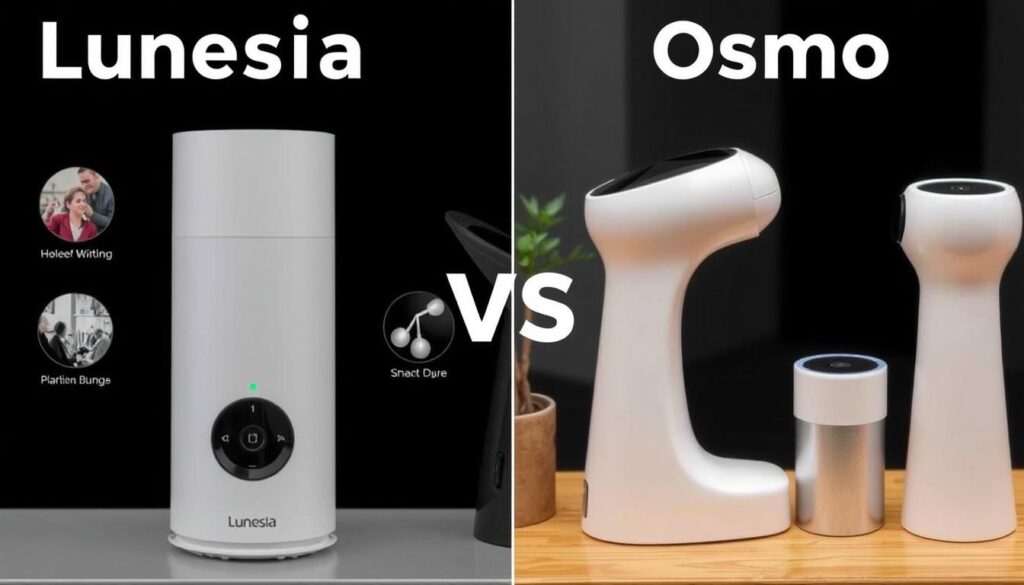
Lunesia and Osmo offer innovative learning experiences, but their pricing models differ significantly. Understanding these differences is crucial for parents to make informed decisions about their child’s educational tools.
Starter Kits and Entry Points
Both Lunesia and Osmo offer starter kits that serve as entry points for new users. Lunesia’s entry-level package includes the base station with an integrated audio system, three character tokens, and access to 10 interactive stories for approximately $129.99. In contrast, Osmo’s Genius Starter Kit retails for $99.99 and includes the base, reflector, and five foundational games focusing on core educational concepts.
The initial investment for both platforms requires a compatible tablet or smart device, though Lunesia offers a standalone version with a built-in screen for $199.99. This flexibility allows parents to choose the setup that best suits their needs.
Expansion Options and Long-term Investment
Lunesia employs a hybrid pricing model with the hardware purchase followed by a subscription option ($7.99/month) for access to their full library of interactive stories and regular content updates. On the other hand, Osmo takes a more à la carte approach, with additional game kits ranging from $29.99 to $59.99, allowing families to expand their collection based on specific interests.
When calculating long-term value, parents should consider that Lunesia’s subscription model provides continuous new content without additional purchases, while Osmo requires periodic investments in new physical kits. Both companies offer educational discounts for schools and occasional promotional bundles during holiday seasons that can significantly reduce the overall investment.
The resale value differs notably between the two platforms: Osmo’s physical components maintain better resale value on secondary markets, while Lunesia’s value is more tied to the digital content library associated with the account.
Real User Experiences and Testimonials
Let’s explore how parents and educators perceive Lunesia and Osmo based on their real-life experiences. Understanding the practical application and effectiveness of these systems in various settings provides valuable insights into their strengths and areas for improvement.
Feedback from Parents
Parents have been vocal about their experiences with both Lunesia and Osmo. Many praise Lunesia’s software for its ability to captivate children who typically resist traditional educational activities. One parent noted, “My child, who usually avoids reading, now asks to use Lunesia unprompted.” However, some parents have expressed concerns about Lunesia’s subscription model, preferring a one-time purchase option for stories.
On the other hand, Osmo receives high marks from parents of children with attention challenges. The physical interaction component is reported to help maintain focus longer than purely digital activities. Parent surveys indicate that perceived educational value is the primary factor in satisfaction for both platforms, followed closely by entertainment value.
| Feature | Lunesia | Osmo |
|---|---|---|
| Engagement Method | Digital storytelling | Physical interaction with digital feedback |
| Primary Strength | Captivates resistant learners | Maintains focus in children with attention challenges |
| Common Criticism | Subscription model | Initial setup complexity |
Educator Perspectives
Educators have also shared their insights on implementing Lunesia and Osmo in classroom settings. Osmo’s modular nature is noted for making it easier to align with specific lesson plans and rotate among multiple students. Special education teachers have found Lunesia particularly effective for children with language processing difficulties, as the multimodal storytelling approach provides multiple pathways to comprehension.
Classroom implementation data shows that Osmo is more commonly used in station-based learning environments, while Lunesia is often employed for whole-class activities followed by individual exploration. Both platforms show strong retention rates, with approximately 70% of Lunesia subscribers maintaining their subscription beyond the first year, and Osmo users purchasing an average of 2.3 additional kits.
By examining these real user experiences, we can better understand how Lunesia and Osmo fit into different educational contexts and how they contribute to learning outcomes.
Accessibility and Inclusivity Features
When it comes to accessibility and inclusivity, both Lunesia and Osmo have made significant strides, but their approaches differ in several key ways. As we delve into the specifics of each platform, it becomes clear that their design choices reflect a deep understanding of diverse user needs.
Language Options and Cultural Relevance
Lunesia currently offers its interactive video content in eight languages, including English, Spanish, French, German, Italian, Portuguese, Chinese, and Japanese. This extensive language support is complemented by full localization, featuring voice acting that goes beyond mere subtitles. In contrast, Osmo provides interface translations in five languages, although many of its activities are designed to be intuitive enough to transcend language barriers.
Cultural relevance is another area where Lunesia stands out. The platform features stories set across diverse global contexts, with characters representing various ethnicities, family structures, and cultural backgrounds. This thoughtful approach helps ensure that users from different backgrounds can see themselves reflected in the content.
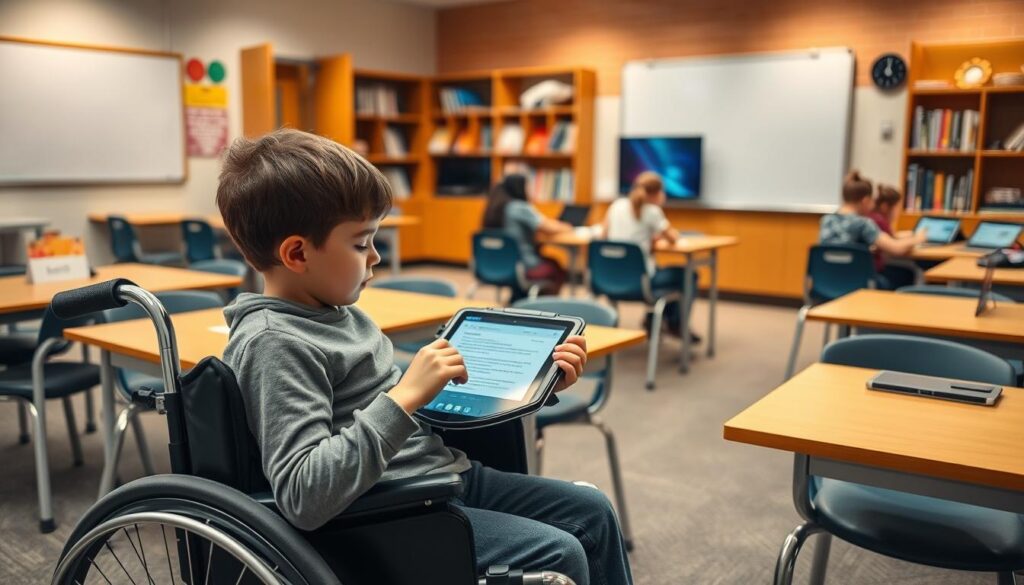
Special Needs Accommodations
Both Lunesia and Osmo include accessibility options for visual impairments. Lunesia’s audio-rich environment provides more comprehensive support through descriptive narration and sound cues, making it a more accessible choice for users with visual impairments.
For children with motor skill challenges, Osmo offers various sized manipulatives and has developed alternative interaction methods for some games. Lunesia, on the other hand, features voice command capabilities, providing an alternative input method that can be particularly helpful for users with motor skill challenges.
Lunesia has also developed specific content modules for children with autism spectrum disorders. These modules feature adjustable sensory stimulation levels and social scenarios designed with input from specialists, demonstrating a commitment to catering to diverse needs.
While neither platform fully supports switch access for children with severe motor limitations, both companies have acknowledged this as a development priority. This recognition suggests that we can expect further advancements in accessibility features in the future.
Technical Limitations and Considerations
Let’s examine the technical limitations and considerations that can affect your experience with Lunesia and Osmo. As we explore these aspects, you’ll gain a deeper understanding of what to expect from each platform.
Both Lunesia and Osmo offer innovative approaches to interactive learning, but like any technology, they come with their own set of technical challenges. Understanding these limitations is crucial for making an informed decision that suits your child’s needs.
Common Issues and Troubleshooting
Users of both Lunesia and Osmo may encounter several common technical issues. For instance, Lunesia users have reported Bluetooth connectivity problems between the base station and tablets, particularly with certain Android devices. On the other hand, Osmo’s reflector positioning can be problematic in environments with strong backlighting or glare, occasionally requiring adjustments to room lighting for optimal performance.
- Connectivity Issues: Lunesia’s Bluetooth connectivity can be finicky, especially with certain Android devices.
- Environmental Adjustments: Osmo’s performance can be affected by lighting conditions, requiring adjustments for optimal use.
- Firmware Updates: Both platforms require periodic firmware updates, which can sometimes cause temporary incompatibility issues.
- App Crashes: Users of both systems may experience occasional app crashes, though Osmo’s separate app approach tends to isolate issues to specific activities.
Troubleshooting these issues often involves simple steps like restarting devices, updating firmware, or adjusting the environment. However, being aware of these potential issues can help you prepare and find solutions more efficiently.
Future-Proofing and Compatibility Concerns
When investing in either Lunesia or Osmo, it’s essential to consider their future-proofing and compatibility with evolving technology. Lunesia’s cloud-based content delivery ensures compatibility with future stories and features, but it requires ongoing subscription payments. In contrast, Osmo’s physical components have longer practical lifespans but may face compatibility issues with future tablet designs or operating system updates.
| Feature | Lunesia | Osmo |
|---|---|---|
| Content Delivery | Cloud-based, ensuring future compatibility | Physical components with potential future compatibility issues |
| Subscription Model | Requires ongoing subscription payments | No subscription required for core functionality |
| Battery Life | Base station requires recharging after 4-5 hours | Significantly drains the host tablet’s battery |
| Cross-Platform Progress | No cross-platform progress synchronization | No cross-platform progress synchronization |
As you consider these factors, it’s clear that both platforms have their strengths and weaknesses. By understanding these technical limitations and considerations, you can make a more informed decision that aligns with your expectations and your child’s needs.
Environmental Impact and Sustainability
As we explore the world of interactive learning, it’s essential to consider the environmental footprint of innovative systems like Lunesia and Osmo. Both companies have made significant strides in reducing their ecological impact, but there are still areas to be explored and improved upon.
Materials and Manufacturing Practices
Lunesia has made notable efforts in sustainable manufacturing, using recycled plastics for 65% of their base station components and FSC-certified wood for their character tokens. In contrast, Osmo’s physical gaming pieces are primarily made from ABS plastic, although they have begun transitioning to more sustainable materials for new product lines.
- Lunesia’s use of recycled plastics reduces the demand for virgin materials and lowers their carbon footprint.
- Osmo’s shift towards sustainable materials indicates a positive trend in reducing environmental impact.
Digital Waste and Product Lifecycle
The environmental footprint of digital products extends beyond physical materials, with server energy consumption for cloud-based platforms like Lunesia representing a significant impact. Osmo’s approach, while generating less digital waste, produces more physical waste through its multiple component sets.
Both companies offer recycling programs, with Lunesia’s take-back program showing a higher participation rate. The average lifecycle of Lunesia’s hardware is approximately 4-5 years, while Osmo’s physical pieces remain usable as long as compatible tablets exist.

In conclusion, both Lunesia and Osmo are taking steps towards sustainability, but there’s still room for improvement. As consumers, we should consider these factors when choosing educational gaming systems, promoting a more environmentally friendly approach to learning.
Which System Is Right for Your Child?
As a parent, deciding whether Lunesia or Osmo is right for your child involves considering their individual learning needs and preferences. Both systems offer unique educational approaches that cater to different aspects of a child’s development.
Decision Framework Based on Child’s Needs
When choosing between these systems, several factors come into play.
- Consider your child’s learning preferences first: tactile learners often connect more deeply with Osmo’s physical manipulation, while narrative-driven learners may thrive with Lunesia’s storytelling approach.
- Age appropriateness is another crucial factor – Osmo offers more entry-level content for younger children (3-5), while Lunesia’s sweet spot tends to be the 5-10 age range with more complex narrative structures.
- Your existing technology ecosystem matters too: families already invested in Apple products may find Osmo’s software integration more seamless, while those with diverse devices might appreciate Lunesia’s broader compatibility.
- Consider your child’s attention patterns – Osmo’s shorter activity pod works well for children who prefer brief, focused engagement, while Lunesia’s longer narrative arcs suit those who enjoy deeper immersion.
- Budget considerations should include not just initial purchase price but long-term investment in additional content or subscription fees over the expected usage period.
| Feature | Lunesia | Osmo |
|---|---|---|
| Learning Approach | Narrative-driven | Tactile and interactive |
| Age Range | 5-10 years | 3-5 years (entry-level) |
| Device Compatibility | Broad compatibility | Seamless with Apple devices |
Combining Both Systems: Possibilities and Benefits
Many families actually benefit from combining both systems, using Osmo for skill-specific practice and Lunesia for integrative, narrative-based learning experiences. A hybrid approach allows children to develop both the fine motor skills emphasized by Osmo and the sequential thinking promoted by Lunesia’s storytelling software.
Some educators recommend starting with Osmo for younger children (3-5) and introducing Lunesia as they develop stronger narrative comprehension skills around age 5-6. This combined approach can provide a well-rounded educational experience.
Conclusion
Our in-depth analysis of Lunesia and Osmo reveals that the best choice between these two cutting-edge educational systems depends on several key factors. Both platforms represent the forefront of educational technology, combining physical and digital experiences to engage children and develop crucial skills for future success.
As we consider the latest news from both companies, it’s evident that continued innovation is on the horizon. Lunesia has recently announced expanded content partnerships with major educational publishers, while Osmo is developing new augmented reality features. These advancements underscore the dynamic nature of educational technology and the importance of staying informed.
When deciding between Lunesia and Osmo, parents must consider their child’s specific learning style, their family’s technology preferences, and their educational priorities. For those seeking a comprehensive narrative experience with strong language development and critical thinking components, Lunesia’s storytelling pod system offers significant advantages. On the other hand, if developing tactile skills and spatial reasoning is a priority, Osmo’s physical-digital approach may be more suitable.
One valuable tip for new users of either system is to actively participate in their child’s early experiences. Parent engagement significantly increases educational outcomes, regardless of the platform chosen. Additionally, both companies offer free trial options, allowing parents to test compatibility with their child’s interests before committing fully.
The software ecosystems of both platforms continue to evolve, with regular updates adding new features and content that extend the value of your investment. For instance, Lunesia’s superior audio quality is a significant consideration for families prioritizing verbal skills and second language acquisition. Moreover, recent news about educational technology effectiveness suggests that systems combining physical and digital elements show stronger learning outcomes than purely screen-based activities.
Here’s another important tip: remember that no educational technology replaces human interaction. Both Lunesia and Osmo work best as supplements to, not replacements for, reading together, conversation, and real-world exploration. The most successful users of both platforms report integrating the systems into broader learning routines rather than treating them as standalone educational solutions.
In conclusion, while both Lunesia and Osmo offer exceptional educational experiences, the choice between them should be guided by your child’s unique needs and your educational priorities. By considering factors such as learning style, technology preferences, and the importance of features like video content, you can make an informed decision that supports your child’s educational journey.
FAQ
What is the main difference between Lunesia and Osmo?
Lunesia focuses on interactive digital storytelling, while Osmo is centered around tangible play technology, allowing children to engage with physical blocks and pieces that interact with a digital interface.
Are Lunesia and Osmo suitable for the same age group?
Both systems are designed for children, but the specific age range may vary. Osmo is generally geared towards children aged 3-12, while Lunesia’s age range may differ, so it’s essential to check the recommended age for each product.
Can I use Lunesia or Osmo with my tablet or smartphone?
Both Lunesia and Osmo are designed to be used with mobile devices, but it’s crucial to check device compatibility before making a purchase, as some products may require specific operating systems or hardware.
How do Lunesia and Osmo support learning and development?
Both systems offer educational content that aligns with curriculum objectives, promoting skills such as problem-solving, critical thinking, and creativity. Lunesia focuses on interactive storytelling, while Osmo’s tangible play technology develops fine motor skills and hand-eye coordination.
Are there any parental controls available for Lunesia and Osmo?
Yes, both systems offer parental controls, allowing you to manage screen time, track progress, and monitor your child’s activity, providing a safer and more tailored experience.
Can I expand or upgrade my Lunesia or Osmo system?
Both Lunesia and Osmo offer expansion options, such as additional games, puzzles, or accessories, allowing you to extend the system’s capabilities and keep your child engaged.
How do Lunesia and Osmo ensure accessibility and inclusivity?
Both systems provide features such as language options, cultural relevance, and accommodations for special needs, promoting an inclusive and diverse learning environment.
What kind of technical support is available for Lunesia and Osmo?
Both companies offer technical support, including updates, troubleshooting, and customer service, to ensure a smooth and enjoyable user experience.
